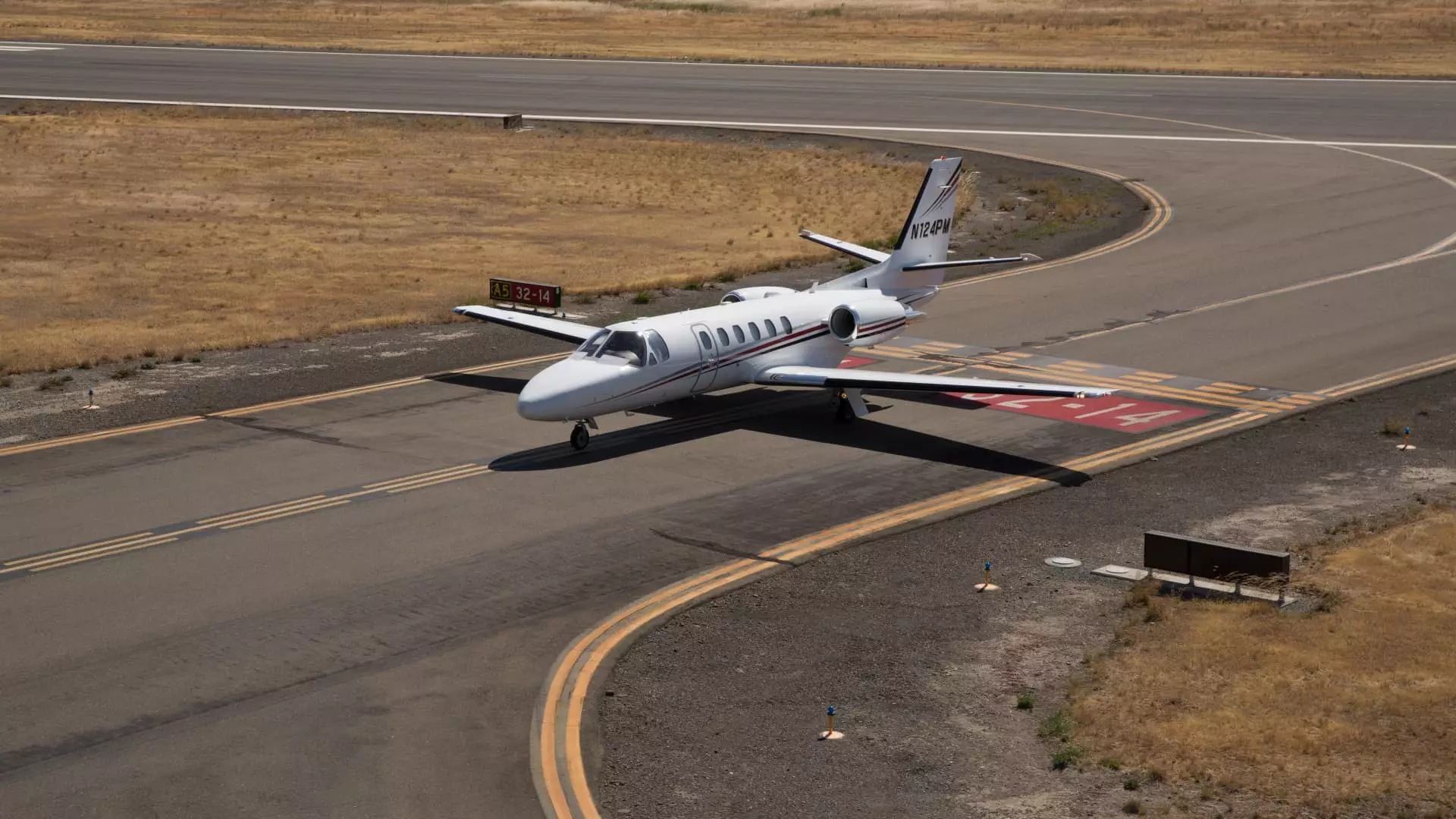49% Plummet: The Troubling Future of Business Jet Purchases

In an alarming reflection of current economic sentiments, consumer confidence has taken a significant downturn, resulting in a notable decline in demand for commercial air travel. As detailed in Barclays’ latest survey, both seasoned investors and affluent consumers are tightening their purse strings, responding to shifting economic pessimism. The implications extend beyond simple travel plans; they threaten an entire sector previously buoyed by robust sales and optimism.
The survey, which engaged 65 business jet broker-dealers and financiers from April 9 to 15, revealed staggering insights. A striking 49% decrease in interest for purchasing business jets has caused an upheaval, indicating a market in distress. This level of downturn is unprecedented since the onset of the COVID-19 pandemic, raising questions about the sustainability of the business aviation industry in the face of external economic shocks. In revisiting the metrics from mid-March to mid-April, one can discern that nearly every parameter assessed by Barclays has suffered, save for inventory levels, which uncharacteristically remain stable.
Understanding the Composite Score and Market Health
Barclays’ composite score, a holistic measure integrated from five distinct metrics, has plunged from 52 to a troubling 40. This decline signifies a market that is not only slowing but potentially spiraling into a more profound crisis. The implications for airplane manufacturers are particularly alarming; a score in the low 40s reflects a lagging order fulfillment versus new orders, indicating that manufacturing health is directly tied to market sentiment. This doesn’t just suggest a temporary dip; it raises red flags for future sustainment and growth in a tightly intertwined industry.
Analyst David Strauss expressed surprise at the severity of this downturn, noting that while a decrease was anticipated, the extent was shocking. With customer interest largely put on hold, businesses appear to be hedging against looming economic uncertainties. This conservative approach is particularly pronounced in the wake of fears over tariffs that could influence not only the aircraft sector but also broader operational capacities for businesses.
The Impact of Tariffs: A Looming Threat on Demand
Respondents voiced significant concerns regarding the detrimental effects of tariffs on the market. An overwhelming 93% predicted a negative impact on new aircraft demand, with a majority bracing for substantial ramifications. The fears are palpable and justified—tariffs can distort market costs and consumer behaviors, leading to stagnation. With such a high percentage of pessimism reflected in the survey, we must also acknowledge a stark contrast: only 7% of the respondents believe that tariffs would be inconsequential. Such a small minority underscores the prevailing anxiety that pervades the industry.
Despite this bleak outlook, the question remains: can potential legislation provide much-needed relief? The proposition from both the Senate and House to extend the Tax Cuts and Jobs Act could indeed be a lifeline. This act previously empowered businesses to fully deduct equipment purchases, allowing for immediate reinvestment back into operations—an appealing prospect for manufacturers. In a turbulent market, this could bolster financial stability and encourage new orders, thus softening the blow of declining consumer interest.
A Glimmer of Hope Amidst the Gloom
As the survey indicated, while nearly half of the participants noted deteriorating consumer interest, a cautious segment still holds out hope. Approximately 27% expressed optimism, believing demand for used jets might bolster as the market adjusts. This bifurcation in perspective emphasizes the unpredictability of economic recovery; even amid widespread despair, there exists a flicker of potential resurgence in certain segments.
This dynamic reflects a broader narrative playing out across the economy. As unsettling as the findings may be, they are not reflective of an absolute downfall. Instead, they showcase the volatility ripe for opportunity—should businesses adapt quickly to emerging trends and capitalize on potential legislative changes. The industry now stands at a crucial juncture: will it hunker down and weather the storm, or innovate and thrive despite adversity? Such choices will determine the flight path of business aviation for years to come.





